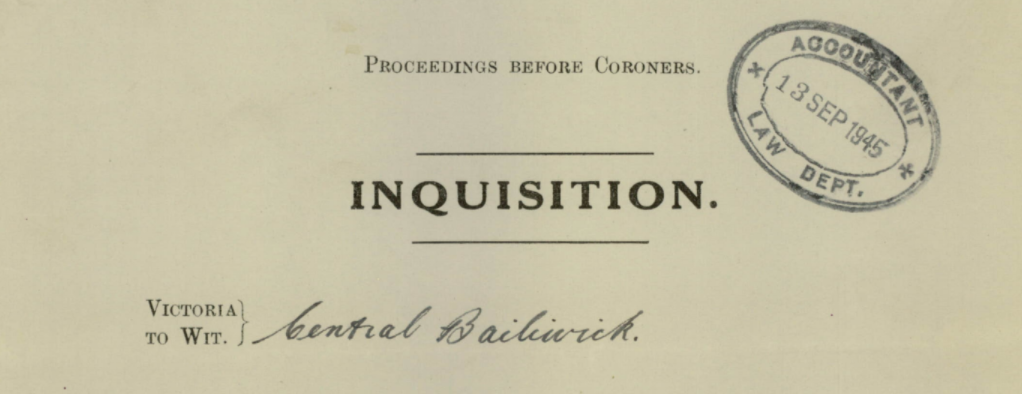I like April people. My Dad was born in April. My son was born in April. Today I had a wonderful chat with another April person in my extended family that I didn’t know existed. They have a similar awesome sense of humour to my other awesome April people I know.
I’ve written about Dad’s birth and his jokes about being born on April Fools Day.
Today is Dad’s birthday and I want to talk about the silly idea that women’s internal reproductive organs are animals and that this thinking existed right up until the early 1900’s. This is not an April Fools joke, this is very real.
A taster…of what I will be writing about next in relation to intergenerational family stories, what my research has uncovered and in particular Jane Brady’s death at 82 in Sunbury Mental Hospital.
The following is from an academic piece (I’ve included references for the nerds). It was about the persecution of women from as early as the 15th century as witches by the church and how that morphed into putting those same demographic of women in asylum’s by early medical practitioners:
But how mental illness was defined and the historical justifications for putting women in institutions was nothing short of ridiculous. The persecution of women during the witch trials of the 14th century and beyond would have no doubt contributed to a rise in mental illness and there was a link between this and older women (MacDonald 1981:39-40).
Tensions around marriageability, the perceived sexual voracity of women and their overall status as inferior could well have prompted a propensity to breakdown and mental illness and was reported widely. But it was pitched that women were more prone to complaints and as something female rather than as a result of oppression (MacDonald 1981:39-40).
Edward Jorden looked to causes natural to the differing anatomy of women including the idea that women’s wombs, wandered or moved through the body. He saw the renegade movement of the uterus in conflict with the rest of the body, the discomfort migrating to the brain (considered the seat of reason), causing what Jorden termed the ‘suffocation of the mother’ or hysteria (Bronfen 1998:108; Jorden 1603:6).
Bronfen (1998:105) writes that the womb was:
[c]onsidered to be a small, voracious animal, a foreign body that had dried up, lost weight and come unhooked, this wandering uterus was thought to seek for nourishment throughout the body of sexually dissatisfied women, such as widows and spinsters.
A combination of the religious and medical understandings of women meant older women (particularly older women with dementia) were at high risk of persecution, although again, this cannot be viewed in isolation of other socio-political influences (Bronfen 1998:105; Darnst 1979:304; Levack 1995:141, 142; Scot 1665:4, 19).
Later in history someone would finally get it somewhat right and yet still the logic behind it was wrong; they would invent the vibrator.
This was to treat the above “hysteria”, and finally women got more socially acceptable orgasms as a small trade off for centuries of oppression (and I haven’t provided references for that bit, but suggest you watch the film of the same name).
Mind you, we always just did it for ourselves in secret anyway, so no bloke ‘gave’ us anything…Fellas! You didn’t invent fingers and ours DO wander!
References for you nerdy types…
Bronfen, E. (1998) The Knotted Subject: Hysteria and Its Discontents. Princeton: Princeton University Press.
Darnst, D.H. (1979) Witchcraft in Spain: the Testimony of Martin De Castanega’s Treatise on Superstition and Witchcraft (1520). Proceedings of the American Philosophical Society 123(5):298-322.
Jorden, E. (1603) A Briefe Discourse of a Disease Called the Suffocation of the Mother. Available from Early English Books Online: http://80-wwwlib.umi.com.ezproxy.library.uq.edu.au/eebo/download/pdf/337098/19994/1-30/99854567_1-30.pdf [Accessed 10 October 2002]
Levack, B.P. (1995) The Witch-hunt in Early Modern Europe (2nd Edition). New York: Longman.
MacDonald, M. (1981) Mystical Bedlam: Madness, Anxiety, and Healing in Seventeenth-century England. Cambridge: Cambridge University Press.
Scot, R. (1665) The Discovery of Witchcraft [online]. Available from Proquest Early English Books Online: http://80-wwwlib.umi.com.ezproxy.library.uq.edu.au/eebo/download/pdf/337099/55338/1-227/12166650_1-227.pdf [Accessed 10 October 2002].



